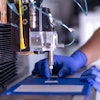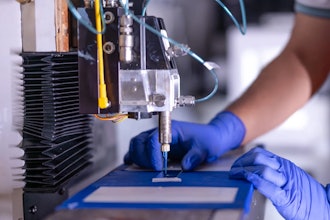Earlier this year, Hyundai selected robot-artificial intelligence as one of five areas of future innovation growth.
Like BMW and Ford before them, Hyundai is dipping its toes into the exoskeleton pool. This week, the company announced that its robotics team is currently developing exoskeleton technology in three different areas: wearable robots, service robots and micro-mobility.
The company first tested the Hyundai Chairless Exoskeleton (H-CEX) at a Hyundai-KIA North American factory last August. The test was such a success that the company will begin extensive testing for the Hyundai Vest Exoskeleton (H-VEX) wearable industrial robot.
The first H-CEX is designed to assist the joints while a worker is in a sitting position. It only weighs about 3.5 pounds and it can handle up to 330 pounds. It can also also be adjusted to different employee heights.
The H-VEX is designed to alleviate pressure on the workers’ neck and back by adding about 132 lbs. of strength to the user when his or her arms are used overhead. Like its predecessors, it will likely help prevent injuries and increase work rates.
Hyundai is also developing exoskeletons for other industries. The company is working on the H-MEX medical exoskeleton, which helps paraplegics and the elderly walking and climb staircases. Right now, it is working for FDA approval.
The company is also working on a "Hotel Service Robot" that will take over turn-down and concierge services at hotels, a "Sales Service Robot" that can explain car details to customers in retailers, and an "Electric Vehicle Charge Manipulator" that automatically charges electric vehicles.






















